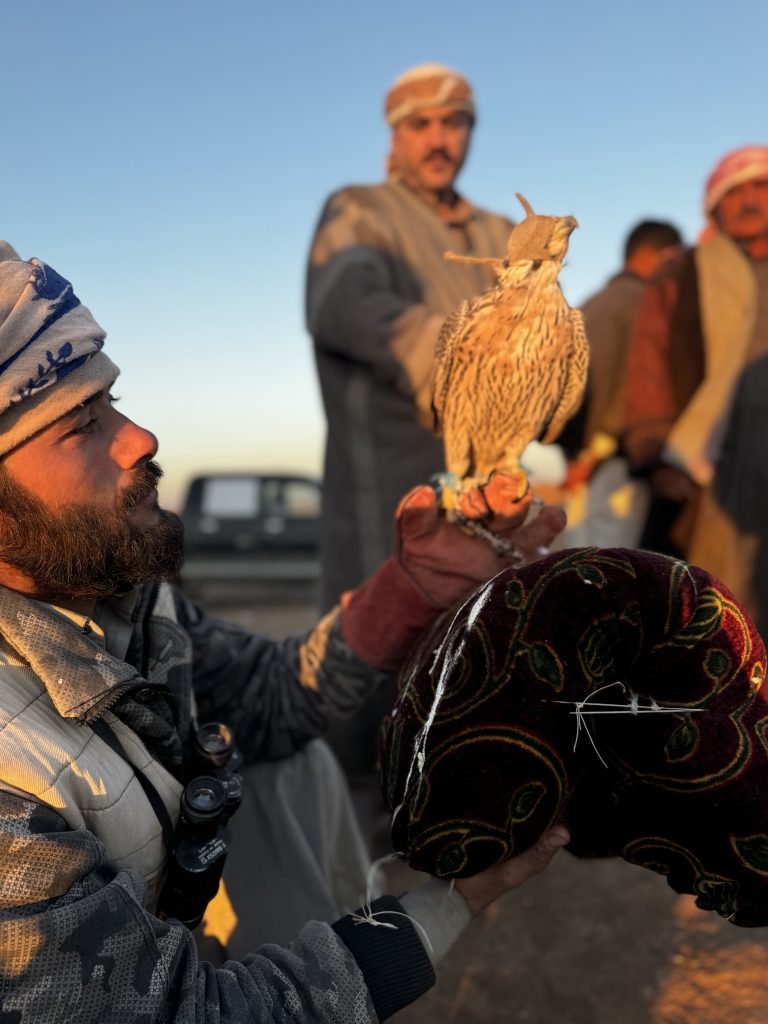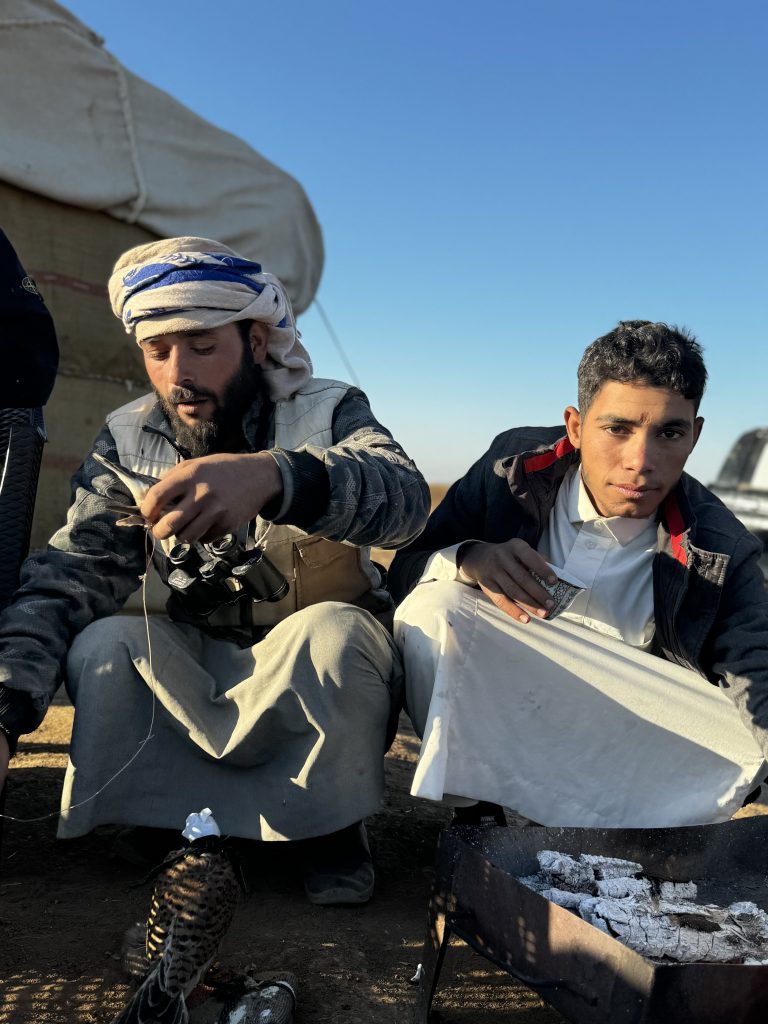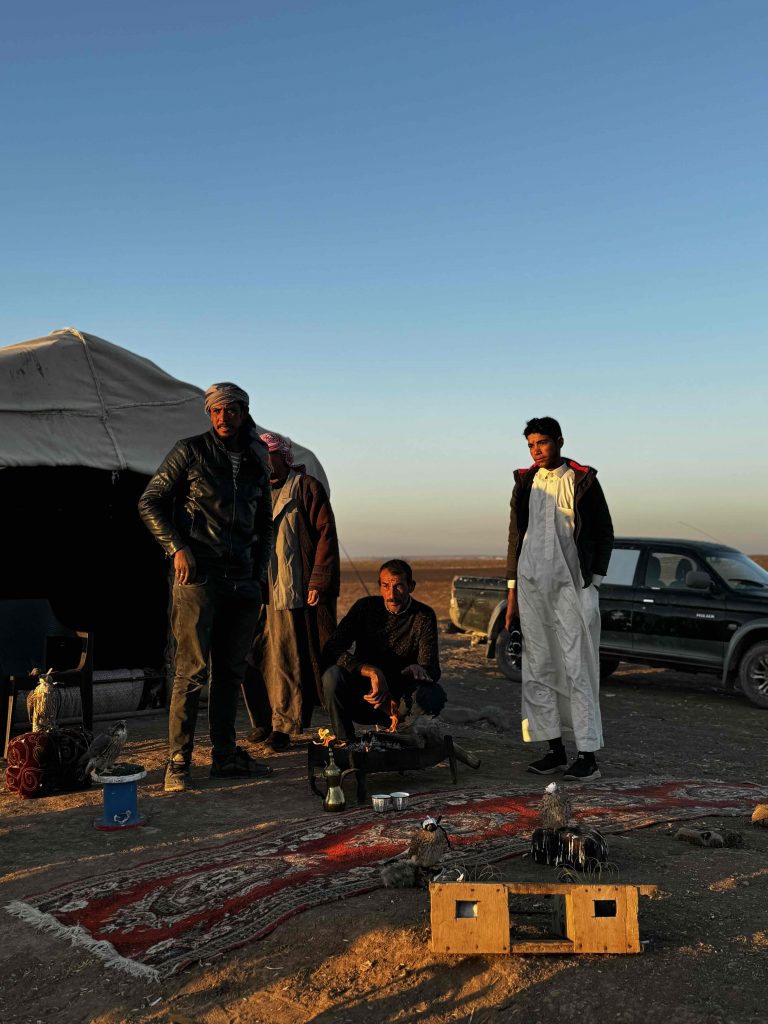Perhaps you have seen disciplined falcons and eagles at work in Central Asia and the Gulf, hunting everything from small rabbits to wolves with the help of their handler who has often been bird hunting for years, and their family for generations. This is a nomadic practice of Syrian Falcon Hunting where hunters spend months teaching their birds how accurately and efficiently hunt their prey and create the exact right circumstances for the birds to perform. Once trained, birds can cost up to a million US dollars, making this a lucrative business for those with a vested interest.
Have you ever wondered about how these birds are procured? We spent a morning with some local men from rural Qamishli region in Rojava/ North-Eastern Syria to learn more about the process of Falcon Hunting in Syria!

Table of Contents
How Syrian Falcon Hunting Works:
Falcon hunting has been a practice passed down in rural Syrian families for decades. In the second half of the year as the weather drops significantly in Europe, the falcons begin migrating SouthEast through Eastern Europe to West and Central Asia, with their final destination being continental Africa.
During the months of October and November, the falcons pass over North-Eastern Syria on their migration path. Here, many families are involved in hunting falcons to resell. Capturing a falcon is tedious and strenuous work, however they can sell for thousands, hundreds of thousands and in rare cases – even a million dollars!
Falcon hunters usually congregate on barren fields with a tent for eating and sleeping in the nomadic style pitched for the months ahead. The best time to find the birds are when the temperature is the coldest as they are often slower and looking for food – making them vulnerable.
Falcon hunters have binoculars and look out for signs of hunting birds on the horizon. Once spotted, they will either ride a motorbike, drive a car or walk closer depending on how far the bird is. From there, they have a bird of prey such as a pigeon or small bird wearing a wired harness. This wired harness acts as a trap for the falcon. Once the falcon is captured and tangled in the wired, they are weighed down by the bird of prey. Then, they can travel an additional distance of up to 5km before tiring and landing, where the falcon hunter can collect the bird.

The Value and Challenges of Falcon Hunting
Falcon hunting is not only a traditional practice passed down through the male members of the family, but it also offers a sense of community as many different men often falcon hunt together for long periods of time throughout October and November.
The group we went hunting with were from different families, villages and ethnicities. Once a falcon is caught, it will be sold depending on the size and age for the purpose of falconry. Younger, larger birds sell for more than smaller and older birds. The group that we went falcon hunting with had caught birds worth $1,000 USD all the way to $100,000 USD!
But it is not all so simple – constantly keeping watch for birds, especially in the early hours of the morning can be tiring and some days may pass without a single bird of interest being spotted. This is why hunters prefer staying in pairs or in small groups.
Hunting these Falcons is illegal in Europe, with the penalties being large fines. This practice is also technically illegal in Syria however is widely accepted and is a form of income for many. Interestingly enough, if you were a falcon hunter born in North-Eastern Syria (now AANES/ Rojava), you can receive a special license allowing you to cross into Federal/ government controlled Syria to hunt in areas such as Idlib which is also a known area for Syrian falcon hunting.
Syrian Falcon Hunting – Providing an Opportunity for Economic Growth
While a tedious and often unrewarding practice, if a bird is caught and sold for a decent price, it can provide significant remuneration in an area of Syria with low per capita income.
Would you like to join YPT in Rojava? You can check out our available tours, further reading and Independent Tour options by clicking on the link below:






